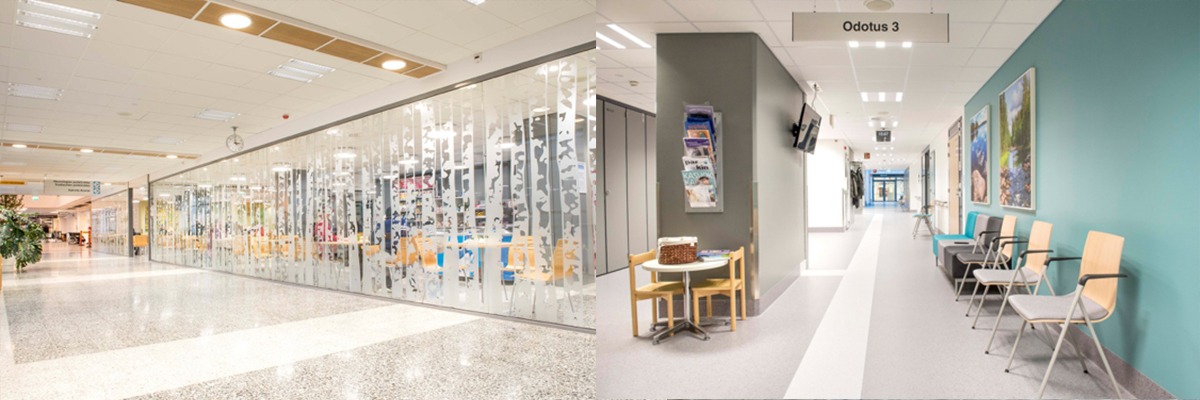


The hospital sector requires special consideration as inhabitants are either sick, chronically ill, or disabled in basic daily activities. They may be with or without visual problems, frailty, movement disorders, sleep disturbances or memory and cognitive problems. Light can play a very prominent role in improving the quality of life for these individuals. Encouraging more use of outdoor spaces has a major impact if used in association with suitable lighting indoors. The eye’s health (lens transmission, pupil size and reflex) can be measured and assessed. Accurate information is important for vision (glare, acuity) and non-image forming function (sleep-wake timing) and has to be taken into consideration for lighting solutions.
The temporal 24-hour light-dark exposure becomes very important for the repair and regeneration of cells, because cell cycles are dependent on strong signals from the body clock, whose activity is influenced by light quality, intensity and timing. Therefore, personalised dynamic light settings for each room in hospitals should be propagated. For example, dynamic light can include a dawn simulation, a spectrum of light that fluctuates with warmer colour temperature over the course of the day, and an absence of cool colour temperature in the evening. Furthermore, in a hospital, if possible, a patient should be allowed to adjust light levels in the room by shading daylight, dimming ceiling lighting from cool to warm colour temperature and having localised lights for reading or getting up at night.
Conclusion: Patients should be able to control the light settings in the room This will support the healing process and enhance quality of life for the patients.

When extensive renovation work was undertaken at Seinäjoki Central Hospital (Finland), the focus for the refresh was to promote health and wellbeing. All routers are linked in the hospitals own IP network, which means that the system is easy to maintain, any changes and adjustments don’t require site visits.



More light during the day for shorter stays:
A number of peer-reviewed, independent studies show that access to daylight leads to patients being discharged faster.
A significant relationship appears to exist between indoor daylight environments and a patient’s average length of stay. In 25% of cases studied, patients staying in bright rooms (such as those located on the southeast side of a hospital) were discharged 16-41% faster than those staying in rooms receiving less light.